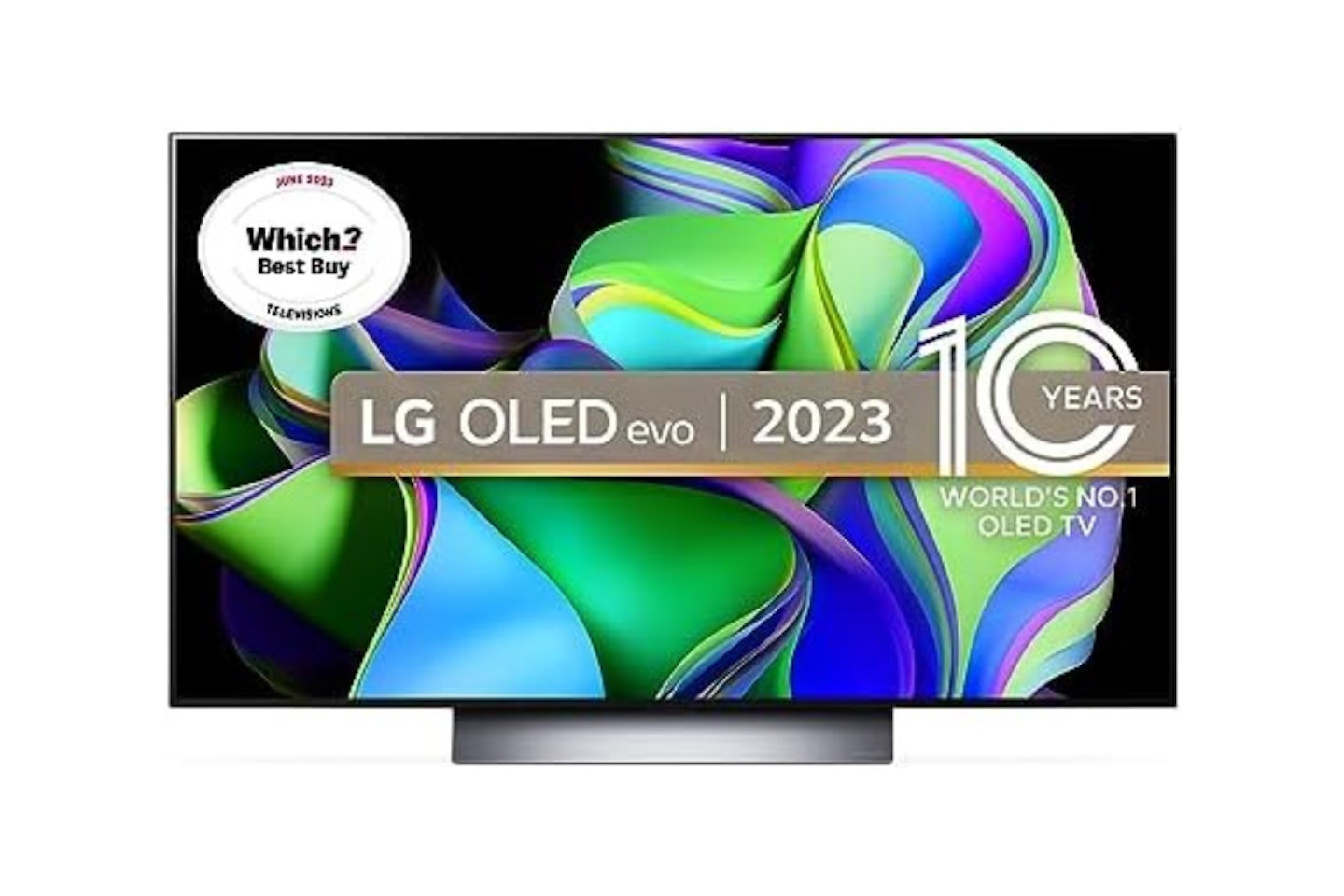This year continues to be an important one for television enthusiasts and consumers alike. Some of the best TVs we've ever seen have hit the market. Breakthrough technologies, like stunning QLED and OLED TVs, have dropped massively in price lately. We've seen lots of support for next-generation gaming consoles too. But with so many sizes, screen types and internal gadgetry on offer, it's no wonder that finding the best TV for you can be a slightly daunting task. That's where we come in.
Size really is everything when it comes to making the right choice. Screens from a modest 43-inch television all the way up to 60-inch TVs and beyond will each deliver a different experience that's well suited to the space you have available. But it's not as simple as just buying the biggest one your budget can stretch to - we've put together a guide to this, and more, at the end of the article.
The best TVs shortlist:
As a rule of thumb, the best TV is always going to be a smart TV these days. Hundreds of channels offer hit shows like the excellent Somebody I Used to Know on Amazon Prime. Paramount+ and Disney+ have launched their new takes on Star Trek and Star Wars. There's always something to watch. But what is a smart TV, and how can you guarantee that your new TV can deliver what you want to watch? There always seems to be a massive range of common streaming apps and catchup services included on the best smart TVs, but the truth is not all of them will offer absolutely everything. And what if you're all about getting the best OLED TV for gaming?
So, to help you choose, we've selected our favourites from the best TV brands like Samsung, LG, Hisense, and Philips. Whether it's kicking back for an adrenaline-pumping action film, binge-watching hours of your favourite show, or an all-night session on a gaming TV, we've got you well and truly covered. The best TVs of 2025, and the most stunning audiovisual experience your living room will ever see, await you below.
Please note: All prices are correct at the time of writing. Prices, stock and deals are subject to change without notice.
The best TVs of 2025
1.
Samsung S95D
Best Smart TV Overall
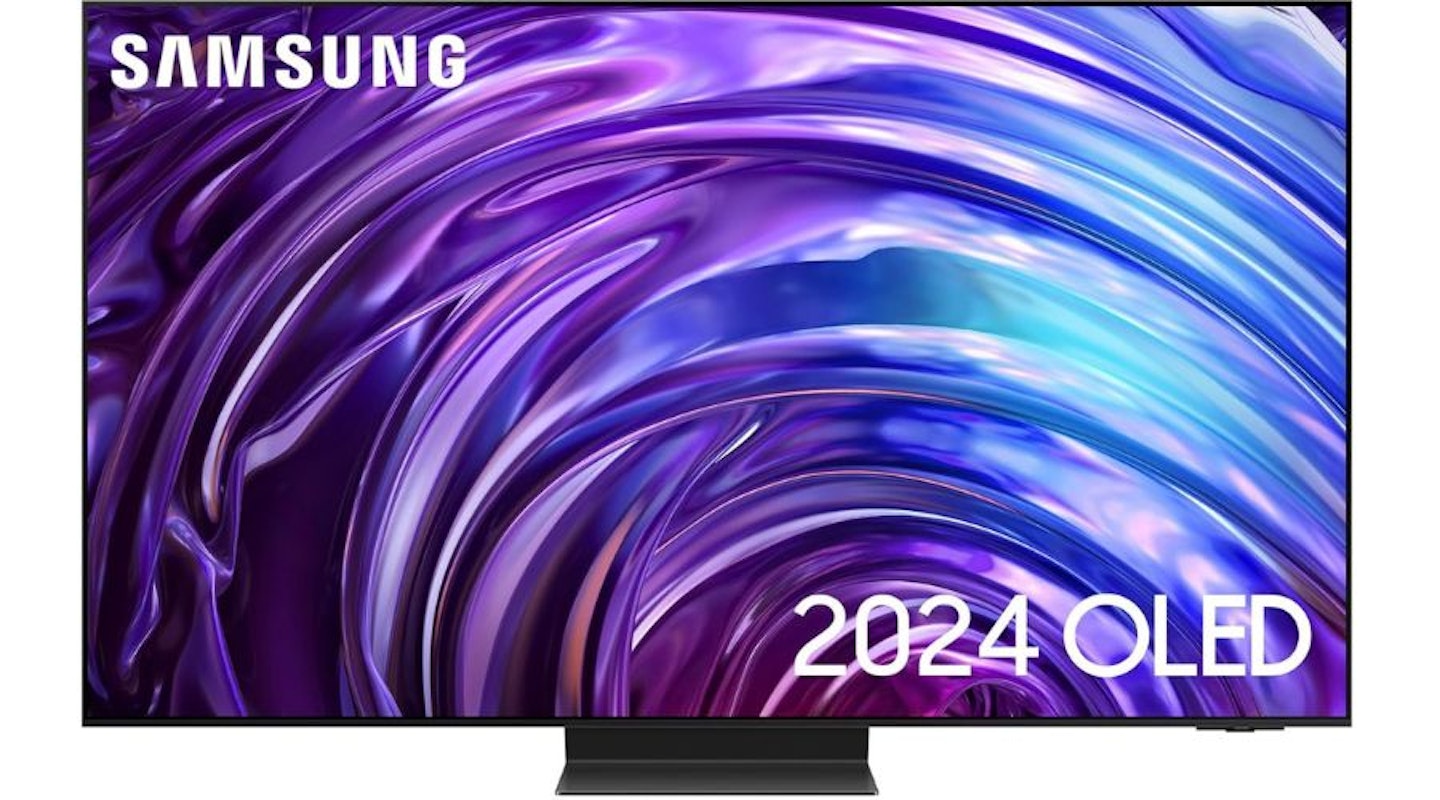 Samsung
SamsungSamsung’s flagship model in 2024, the S95D has absolutely everything you could ask for in a television. Stunning picture quality courtesy of its 4K QD-OLED display, and 8 million self-illuminating pixels – essential for the best HDR displays - to provide superb contrast. It also introduces Glare Free technology, to massively reduce glare from any other light sources in your room. An AI processor helps to enhance brightness, colour and detail, while HDR Pro and Dolby Atmos Sound complete the audio-visual experience. The screen has that all-important 120Hz refresh rate for silky smooth gaming, and can even go up to 144Hz for PC gaming.
This set has eight speakers built-in to provide Object Tracking Sound+, where the sound follows the action on screen, with 70W of power. AI also supports audio performance, with tools such as Adaptive Sound Pro and Active Voice Amplifier helping to balance dialogue with other sound effects. All of this is ably supported by Samsung’s Smart platform, which includes both Bixby and Alexa voice assistants.
The incredibly slim bezels – just 11mm (about 0.43 in) – mean this is a beautiful television which is all screen. With an RRP of £2199 for the 55-inch model, it certainly isn’t the cheapest. But in return, you’re getting what is, quite simply, one of the best TVs on the market.
Pros
- Breathtaking OLED technology for even deeper colour accuracy and contrast
- Fantastic gaming potential thanks to AMD FreeSync and Game Motion Plus
- Brilliant for realistic sound with Object Tracking Sound, DTS-X and Dolby Atmos
Cons
- So thin and light that it flexes a little, so wall mount with care
| Screen Size: | 55, 65, 77-inches |
| Resolution: | 3840 x 2160p (4K) |
| HDR: | HDR10+ |
| VRR: | Yes |
| Audio Output Power: | 70 W |
| HDMI Features: | HDMI 2.1 x 4 |
| Energy Rating: | G |
| Refresh Rate: | Up to 144Hz |
| Additional Features: | AMD FreeSync Premium Pro, Motion Xcelerator Turbo Pro, Game Motion Plus |
2.
LG C4
Best OLED TV for gaming
LG regularly produces some of the best TVs for gaming, thanks to the ultra-smooth display, Auto Low Latency Mode, and Variable Refresh Rate up to 144Hz for PC gaming, and 120Hz for everything else. There’s also the Game Optimiser mode, which the C4 can switch to automatically when it detects a console has been connected. There are also four HDMI 2.1 ports, to support rapid data transfer between console and screen, as well as FreeSync and G-Sync compatibility.
As well as being built to suit gamers, the LG C4 is brilliant in lots of other ways as well. The OLED display is crystal clear, ably supported by AI to reduce image noise. HDR support for Dolby Vision, HDR10 and HLG is available to provide the best possible picture no matter the format. The display is even brighter than the C3 model of 2023, so you’ll be fine watching even in bright conditions. Adaptive Sound Control helps balance the audio of whatever you’re listening to, alongside Dolby Atmos. LG’s webOS is also a user-friendly smart TV platform.
We’ve often seen this on sale for below the RRP of £1899.99 for the 55-inch model, sometimes for closer to £1500. That makes this a superb, versatile TV that’s great for gaming, but does everything else brilliantly as well.
Pros
- One of the best displays on the market, thanks to the LD OLED panel and Dolby Vision
- 0.1ms response time is lightning fast for gaming accuracy
- Variable 120hz refresh rate absolutely ideal for smooth game visuals
Cons
- Serious gamers might want to amp up the sound with a soundbar or gaming speakers
| Screen Size: | 42, 48, 55, 65, 77, 83-inches |
| Resolution: | 3840 x 2160p (4K) |
| HDR: | Dolby Vision / HDR10 / HLG |
| VRR: | Yes |
| Audio Output Power: | 40 W |
| HDMI Features: | HDMI 2.1 x 4 |
| Energy Rating: | G |
| Refresh Rate: | 120Hz |
| Additional Features: | Dolby Vision HDR, Dolby Atmos, AI Sound Pro, AI Acoustic Tuning, Clear Voice Pro, OLED α9 AI processor with AI Super Upscaling |
Best 65-inch TV under £1,000
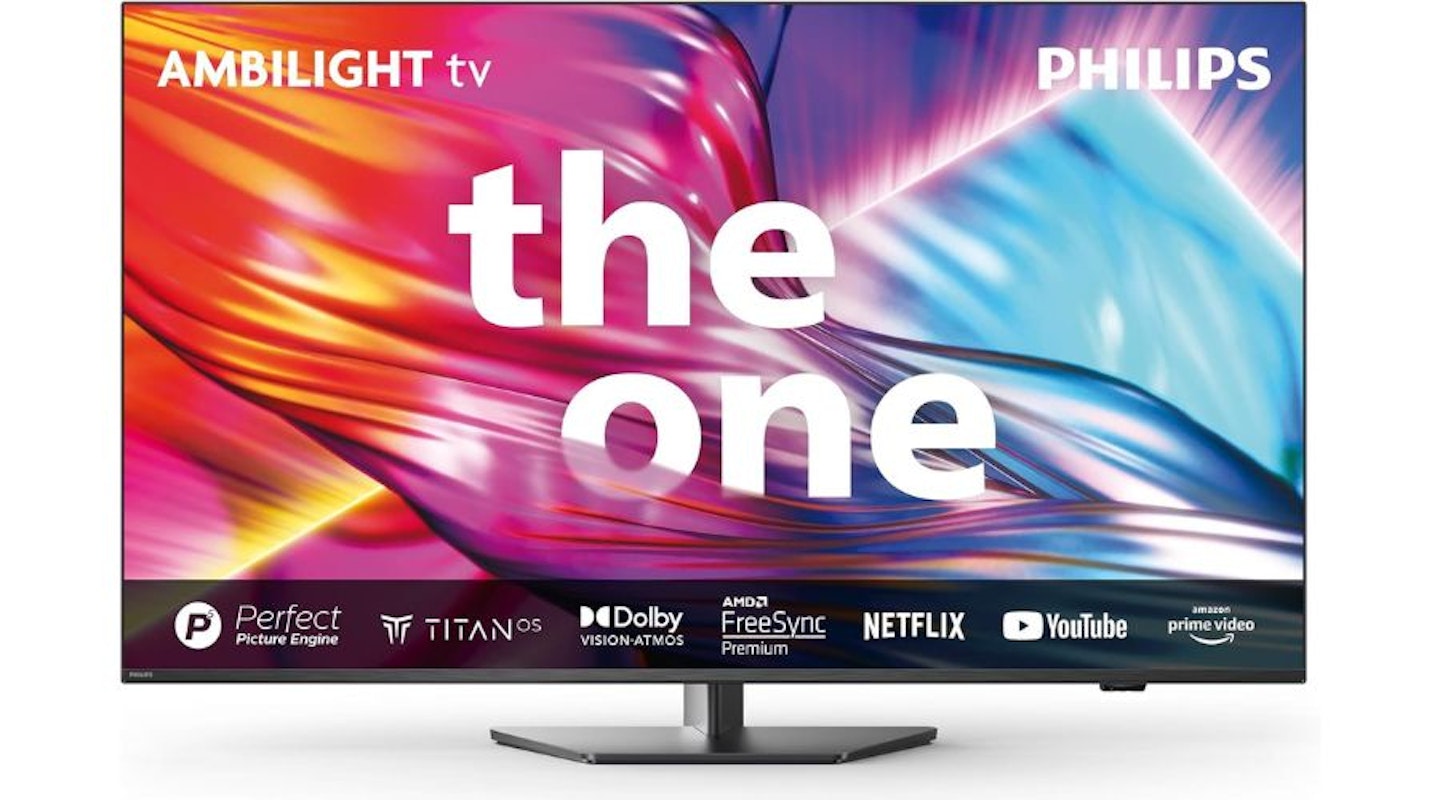 Philips
PhilipsIf you want a truly immersive experience from your 65-inch TV, we don’t think you can look beyond the Philips The One 65PUS8909 Ambilight TV. As a new model for 2024, it is packed with great features that make this a great telly – and still comes in under the £1000 mark, with an RRP of £899.
Starting with the picture and sound, this TV supports Dolby Vision and Dolby Atmos, to complement the 4K ultra-HD LED display. The display offers Variable Refresh Rate of up to 144HZ for super smooth PC gaming via the HDMI 2.1 port. There’s also support for HDR, Dolby Vision, HDR10 and HLG picture formats, to give you sharp images regardless of what you’re watching. Four 10W speakers help to create a rich and immersive soundscape.
But the standout feature on a Philips TV is still Ambilight, which uses integrated LEDs on the back of the screen that react to whatever you’re watching. By matching the colour of what’s on the screen, it makes the screen seem larger and more immersive, and Philips claims it can help to reduce eye strain. It’s a great extra feature that elevates this compared to a lot of its competitors.
Pros
- Enormous 4K screen at an affordable price
- Dolby Atmos support for a stadium feel
- Easy to use
Cons
- Titan OS interface isn't as user-friendly as some
| Screen Size: | 65-inches |
| Resolution: | 3840 x 2160p (4K) |
| HDR: | HLG, HDR10, HDR10+ |
| VRR: | Yes |
| Audio Output Power: | 40 W |
| HDMI Features: | HDMI 2.1 x 4 |
| Energy Rating: | G |
| Refresh Rate: | Up to 144Hz |
| Additional Features: | Ambilight, Dolby Vision, Dolby Atmos, Google Assistant, ALLM, VRR, FreeSync |
Best budget smart TV
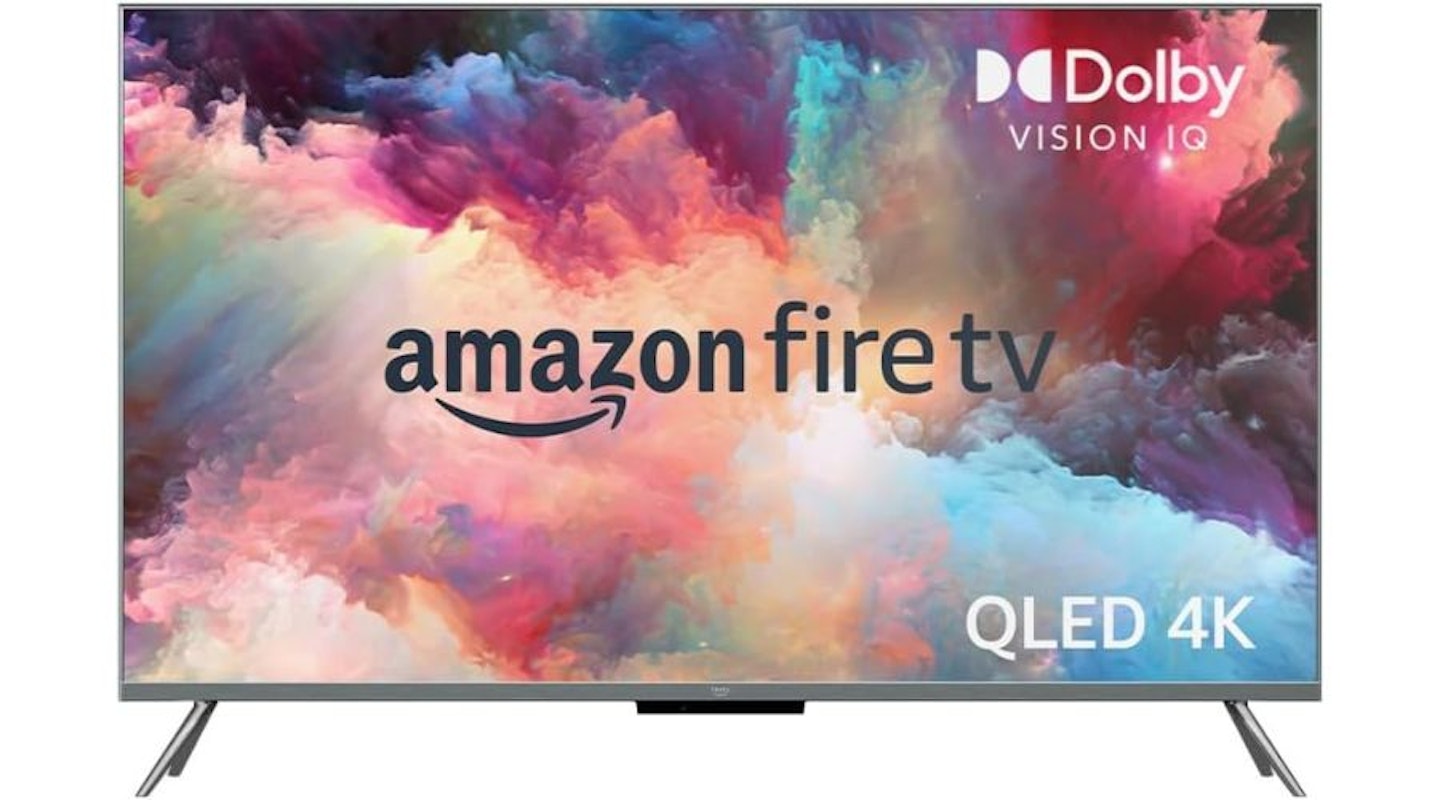 Amazon
AmazonThis Amazon Fire TV Omni QLED TV is among the best budget TVs for a few reasons. You're getting a great screen, supported by Amazon's OS, which is connected to Prime and other Amazon services. Fire TV is a comprehensive smart TV platform, offering support for all the major streaming services – Netflix, Disney Plus, Apple TV and Prime Video, as well as Now TV and Discovery+.
The star of the show is the 4K QLED screen – offering rich colours, deep blacks, vibrant pictures and finishes with really impressive sound. It utilises a full-array LED setup to deliver the best possible contrast. It really is impressive for a television at this comparatively affordable price point (the 55-inch model has an RRP of £749.99).
If you’re a gamer, this telly offers a 60Hz panel rather than the 120Hz you’ll get on more expensive models. But it still supports variable refresh rate and auto low latency mode, to help in fast moving games where lag can make the difference between winning and losing.
Pros
- A brilliant TV for Amazon Prime members with the Fire TV operating system
- Very thin bezels for a budget TV model
- Excellent HDR support with HDR10+ and Dolby Vision
- Dolby Atmos sound for realism
Cons
- 60Hz non-variable refresh rate won't suit hardcore gamers
| Screen Size: | 43, 50, 55, 65-inches |
| Resolution: | 3840 x 2160p (4K) |
| HDR: | HDR 10, HLG, HDR10+ Adaptive and Dolby Vision IQ |
| VRR: | No |
| Audio Output Power: | 2 x 12 W |
| HDMI Features: | HDMI 2.0 x 3, HDMI 2.1 x 1 |
| Energy Rating: | G |
| Refresh Rate: | 60Hz |
| Additional Features: | Voice Remote with Alexa, HDR PRO, Dolby Vision, Dolby Atmos |
5.
Sony A95L
Best home cinema smart TV
The best Sony TVs are consistently among the very best on the market, and the latest flagship model, the A95L, is no exception. If you want one of the best pictures around – which, let’s be honest, is exactly what you should want for your home cinema – this is it.
The 4K-QD-OLED screen is simply incredible, using AI to provide super contrast and clarity. The screen has millions of self-illuminating pixels to support HDR10, HLG and Dolby Vision, while it also automatically upscales images close to 4K. XR Clear Image reduces image noise and blur, while XR OLED Motion reduces any blurring caused by fast movement – perfect for watching sports, or for gaming.
Speaking of gaming, two HDMI 2.1 ports support variable refresh rate and auto low latency mode, as well as a 120Hz refresh rate. And with it being a Sony TV, of course it integrates seamlessly with a PlayStation 5 and gives you a couple of extra features. Auto Genre Picture Mode automatically adjusts the picture mode to maximise visual quality and performance. Auto HDR Tone Mapping instantly optimises HDR settings during the initial PS5 setup.
The A95L doesn’t skimp on sound, either. Acoustic surface Audio + turns the whole screen into a speaker, which makes the sound appear from the right place in the scene. This augments Dolby Atmos, while XR Surround uses the TV speakers to create 3D audio without any additional soundbars or surround sound speakers.
Our one gripe is the feet, which are put at the very edges of the bottom of the screen. You’ll either need a huge TV stand, or a wall mount. That said, if you want the best for your home cinema, this is it.
Pros
- Superb sound quality means you won’t need a separate soundbar
- Crystal clear display is bright and vibrant
- Wide viewing angle and anti-reflection mean it can perform in the biggest and brightest of rooms
Cons
- Stand design makes it impractical
- Only two HDMI 2.1 ports
| Screen Size: | 55, 65, 77-inches |
| Resolution: | 3840 x 2160p (4K) |
| HDR: | HDR10, HLG, Dolby Vision |
| VRR: | Yes |
| Additional Output Power: | 60W |
| HDMI Features: | HDMI 2.1 x 2, HDMI 2.0 x 1 |
| Energy Rating: | F |
| Refresh Rate: | 120Hz |
| Additional Features: | XR 4K upscaling, XR Clear Image, XR OLED Motion, VRR, ALLM |
Best smart TV for bright rooms
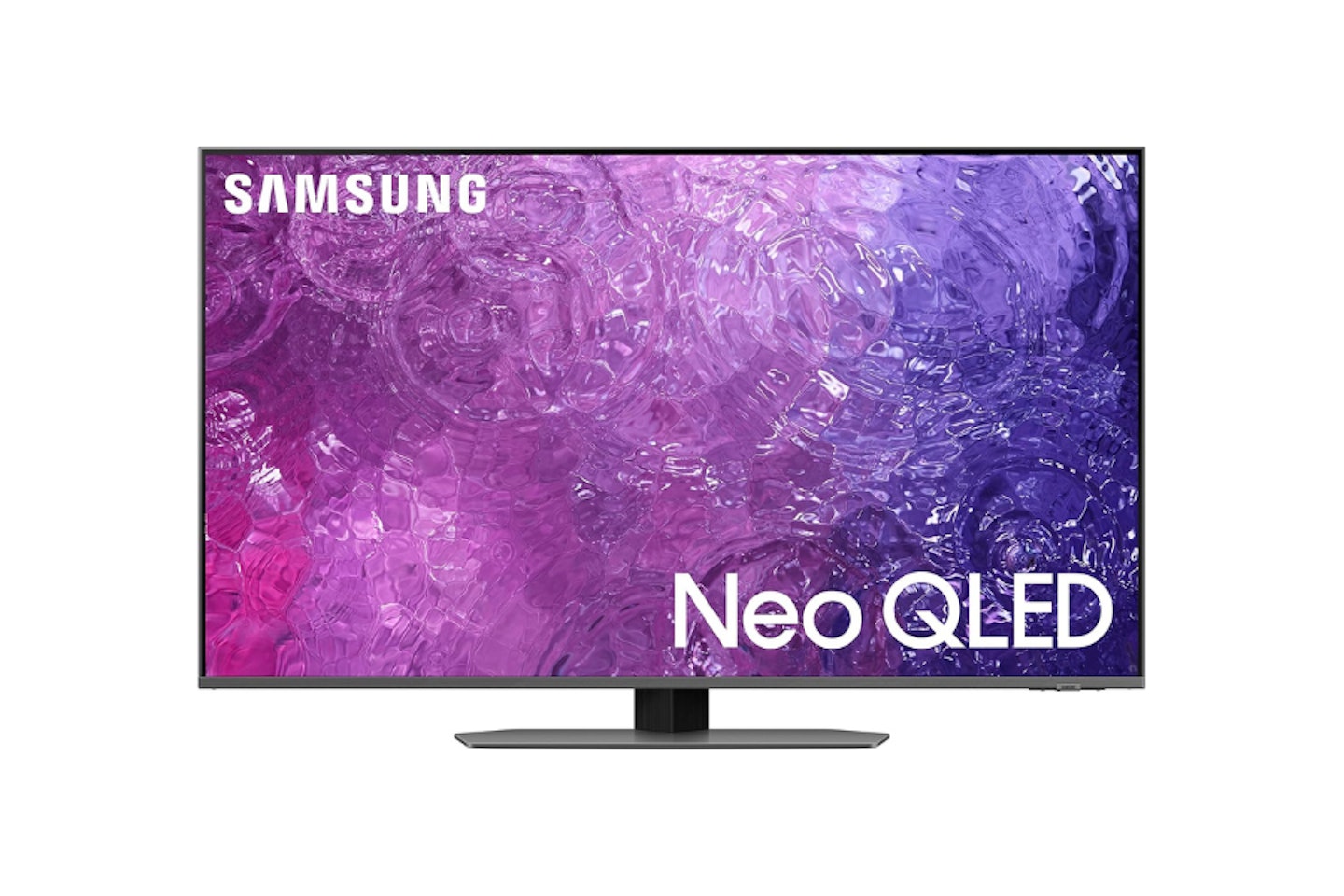 Samsung
SamsungOn a sunny day, watching your favourite show, a major sporting event, or playing some video games can be difficult if the screen isn’t bright enough. Instead of watching the action, you get treated to your own frustrated face as your TV becomes a black mirror. The Samsung QN90C is one of the best TVs for bright rooms, because of the technology that underpins it.
This TV uses quantum dot technology– mini-LEDs roughly the size of a grain of sand – which offer higher peak brightness levels than many OLED screens, without compromising picture quality. The mini LEDS are placed in an array behind the screen, which enables it to produce a brighter screen. This means that for viewing in particularly bright conditions, this TV will outshine many more expensive rivals. It also has an anti-reflection screen, to help minimise glare.
But it isn’t just about brightness. The QN90C also utilises AI to optimise sound and picture, improving contrast, reducing blur, and making voices sound clearer over background sound effects, for example. AI upscaling lets you stream your favourite content in 4K, and eight built-in speakers work with Dolby Atmos to create an immersive 3D audio experience. 120Hz refresh rates via the HDMI 2.1 ports make gaming a joy as well.
Pros
- Incredible brightness
- Solar powered remote control
- Great sound
Cons
- Doesn't have Dolby Vision
| Screen Size: | 43, 50, 55, 65, 75, 85-inches |
| Resolution: | 3840 x 2160p (4K) |
| HDR:HDR, | HDR10+, HLG |
| VRR: | Yes |
| Audio Output Power: | 40W |
| HDMI Features: | HDMI 2.1 x 4 |
| Energy Rating: | F |
| Refresh Rate: | Up to 144Hz |
| Additional Features: | ALLM, VRR, HDR game mode, 4K120, Tizen, Object Tracking Sound Plus, Dolby Atmos |
Best 8K smart TV
 Samsung
SamsungIf you’re in a “money-is-no-object" kind of mood, or you simply want the absolute best that TV technology has to offer, then take a look at the Samsung QN900D – one of the best 8K TVs on the market. To be frank, this doesn’t come cheap – the RRP of £4999 is for the 65-inch model, rising to £9499 for the 85-inch. Then again, this is Samsung’s flagship model for 2024, so perhaps we shouldn’t be too surprised.
In return, you’re getting simply extraordinary picture quality. The new AI processor upscales other content, rendering everything as close to 8K as possible. It adjusts scene-by-scene, and improves brightness, contrast, motion, sound and resolution. It also has the highest density of Mini LEDs in any Samsung TV to create an incredibly bright image.
The QN900D also has an impressive 12-speaker array that allows for Object Tracking – making the sound come from exactly the right part of the screen. And for gaming? Expect ultra-low input lag, buttery-smooth visuals, and Freesync Premium Pro.
Clearly, with that price tag it isn’t for everyone. But if you want the best that 8K currently has to offer, this is it.
Pros
- The highest-resolution display available
- Incredibly bright
- 12-speaker array for superb sound
Cons
- Eye-watering price
| Screen Size: | 65, 75, 85-inches |
| Resolution: | 7680 X 4320p (8K) |
| HDR: | HDR, HDR10+ |
| VRR: | Yes |
| AudioOutput Power: | 90W |
| HDMI Features: | HDMI x 4 |
| Energy Rating: | G |
| Refresh Rate: | 100Hz |
| Additional Features: | AMD FreeSync Premium Pro, ALLM, HGiG, VRR, HDR10+, Tizen, Dolby Atmos, Object Tracking Sound |
Best smart TV for sound quality
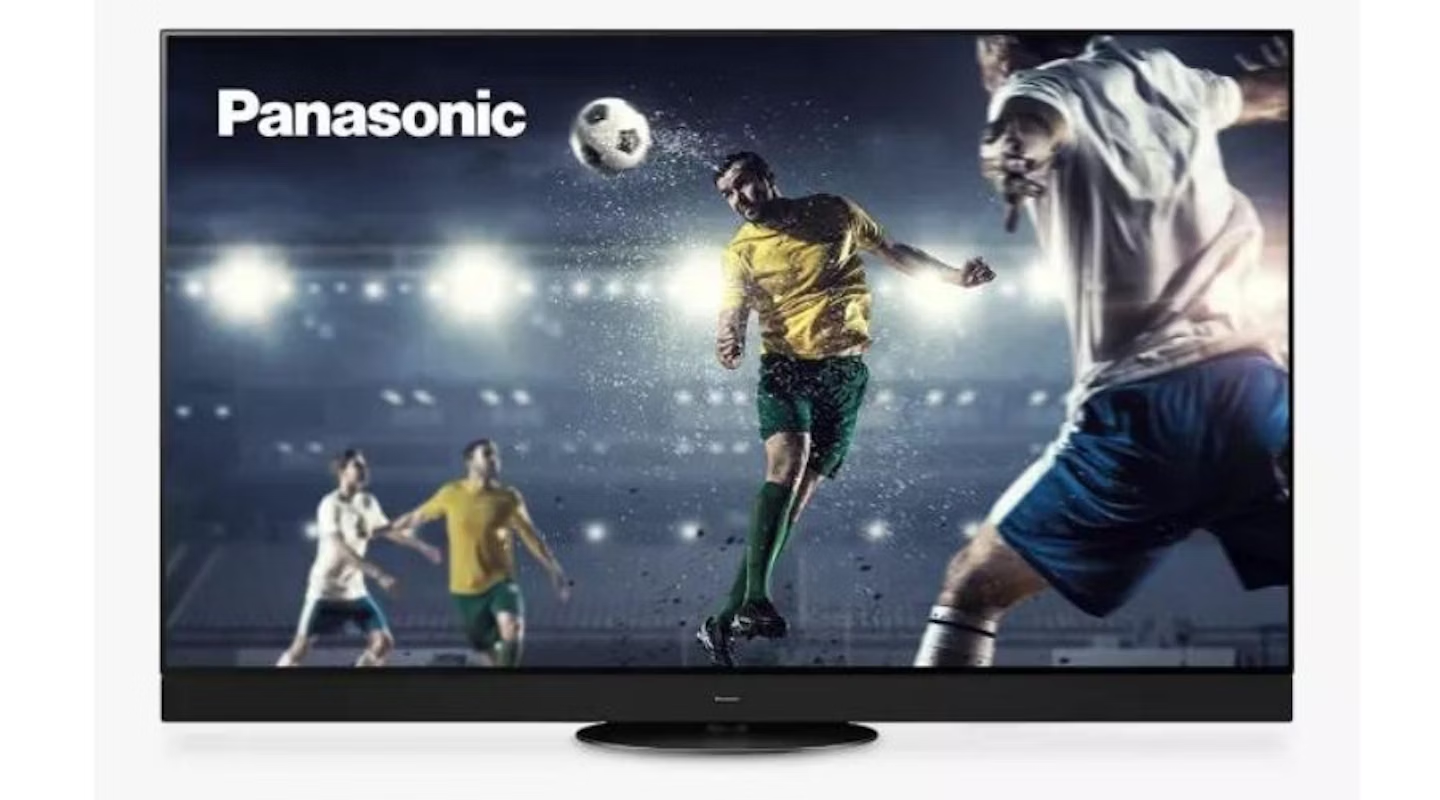 Panasonic
PanasonicThe best TVs for sound aren't just offering a gimmick - sound is often a crucial part of the cinematic experience. For that reason, we’re selecting the Panasonic MZ2000 as our favourite TV for sound quality. It features a 5.1.2 Dolby Atmos speaker configuration, with upward firing speakers, side speakers, and a full external soundbar along the bottom. This delivers exceptional audio performance, complemented by Dolby Atmos.
The sound creation mode allows you to really tailor the sound to your preferences, while the Space Tune function lets you tune each speaker individually, to get the perfect balance. Finally, the MZ2000 uses the array speaker system to enable you to create zones of different sound levels.
It’s not just a great sound system. The TV comes with a sharp OLED display that supports most HDR formats, there’s an ambient light sensor to automatically adjust brightness levels, while for gamers, HDMI 2.1 ports support high frame rates and variable refresh rates.
It’s a superb package, with the best sound of just about any television on the market. The £2999.99 RRP is steep, but it’s one telly that you won’t need a separate soundbar or surround sound system for.
Pros
- Fantastic resolution
- Incredible 3D sound
- Great gaming support
Cons
- Only two HDMI 2.1 ports
- Smart TV platform still isn't great
| Screen Size: | 65, 77-inches |
| Resolution: | 3840 x 2160p (4K) |
| HDR: | HDR10+ Adaptive/ HDR10 /HLG / DolbyVision |
| VRR: | Yes |
| Audio Output Power: | 160W |
| HDMI Features: | HDMI 2.1 x 4 |
| Energy Rating: | G |
| Refresh Rate: | 120Hz |
| Additional Features: | Dolby Atmos, Array Speaker System, Auto AI, Dolby Vision IQ, Filmmaker Mode, Netflix Adapted Calibrated Mode, Alexa voice control, Google Assistant, HFR, VRR, FreeSync Premium, G-Sync |
Best smart TV for a bedroom
The LG C3 in a 42-inch size is a great choice if you want a TV in your bedroom. While it was a model released in 2023, it’s still a brilliant telly that offers plenty of high-quality features, in a small package – and relatively affordable price. While its RRP was £1500 at launch, it’s often available now for under £800.
The slim bezels look fantastic, and the screen is a wonderful 4K OLED display that looks stunning. Great contrast thanks to the HDR support, and high pixel density create incredibly sharp images – although not quite as bright as larger models of this TV. There’s also a native 100Hz refresh rate. Not as good as the 120Hz you get on some models, but good enough for most content to look great. And via the HDMI 2.1 port, there’s support for 120Hz frame rates for games consoles, for example.
If you’re looking for a screen for gaming, this doesn’t disappoint. Variable refresh rate, auto low latency mode, HGiG, FreeSync and G-Sync compatibility are all here, and the Game Optimiser mode automatically provides the perfect settings for a variety of game genres.
A year on from its release, this is still a great television that works great in a bedroom.
Pros
- Stunning 4K OLED display
- Solid feature set for gaming
- Good OS
Cons
- "Only" a native 100Hz refresh rate
- Not as bright as some models
| Screen Size: | 42-inches |
| Resolution: | 3840 x 2160p (4K) |
| HDR: | Dolby Vision / HDR10 / HLG |
| VRR: | Yes |
| Audio Output Power: | 20W |
| HDMI Features: | HDMI 2.1 x 4 |
| Energy Rating: | F |
| Refresh Rate: | 100Hz |
| Additional Features: | FreeSync, HGIG, ALLM, VRR, G-Sync, Dolby Atmos, |
Best smart TV for the kitchen
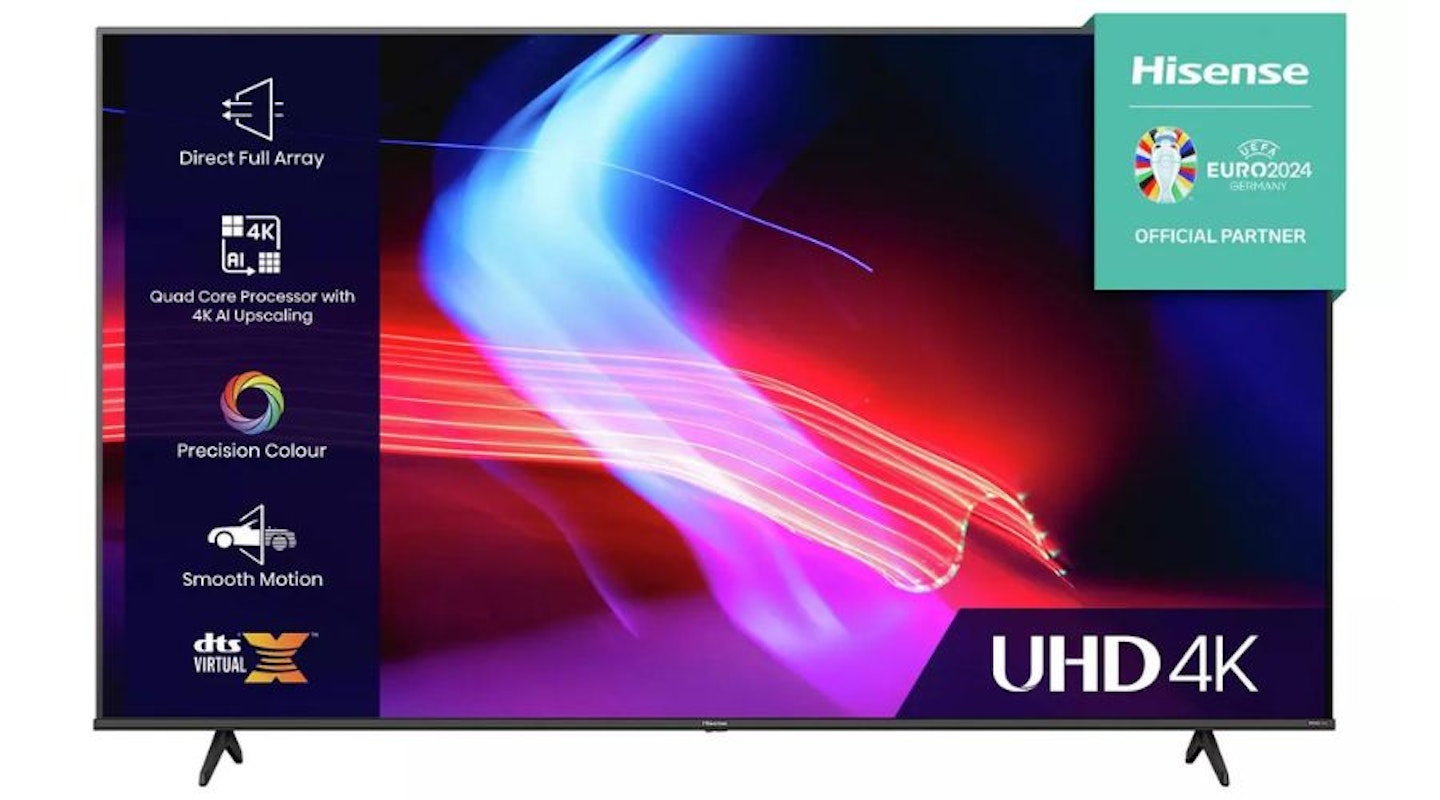 Hisense
Hisensewww.argos.co.uk
If you’re looking for a bargain, and you want a TV that won’t take up too much space in your kitchen, then the 43-inch Hisense A6K is a top choice. With an RRP of just £249, it’s considerably cheaper than anything else on our shortlist. And while that does mean there are a few compromises, you’re still looking at exceptional value for money.
This TV has a 60Hz panel, so it won’t give you the same smooth performance as a 120Hz display can. IT still supports auto low latency mode for gamers, however. The Direct LED backlit screen is an improvement over edge-lit TVs, offering better contrasts and brightness control. This also helps keep the price down. The A6K also uses AI Picture Optimisation to help enhance the image and sound quality of whatever you’re watching, while HDR support covers content in HDR10, HLG and Dolby Vision formats.
Sound-wise, two seven-watt speakers are surprisingly solid, ably helped by DTS
As we mentioned before, you can’t expect perfection at this price point. But for such a cheap price, you’re getting a telly that performs far better than you would expect.
Pros
- Direct LED backlighting is better than edge-lit displays
- Incredibly affordable
- HDR support
Cons
- Not as refined as higher-end models
| Screen Size: | 43-inches |
| Resolution: | 3840 x 2160p |
| HDR: | HDR, HLG, HDR10+, Dolby Vision |
| VRR: | No |
| Audio Output Power: | 2 x 7W |
| HDMI Features: | HDMI 2 x 3 |
| Energy Rating: | F |
| Refresh Rate: | 60Hz |
| Additional Features: | Dolby Vision, DTS Virtual X, Alexa, Google Assistant, ALLM |
Buyer's guide: Best TVs 2025
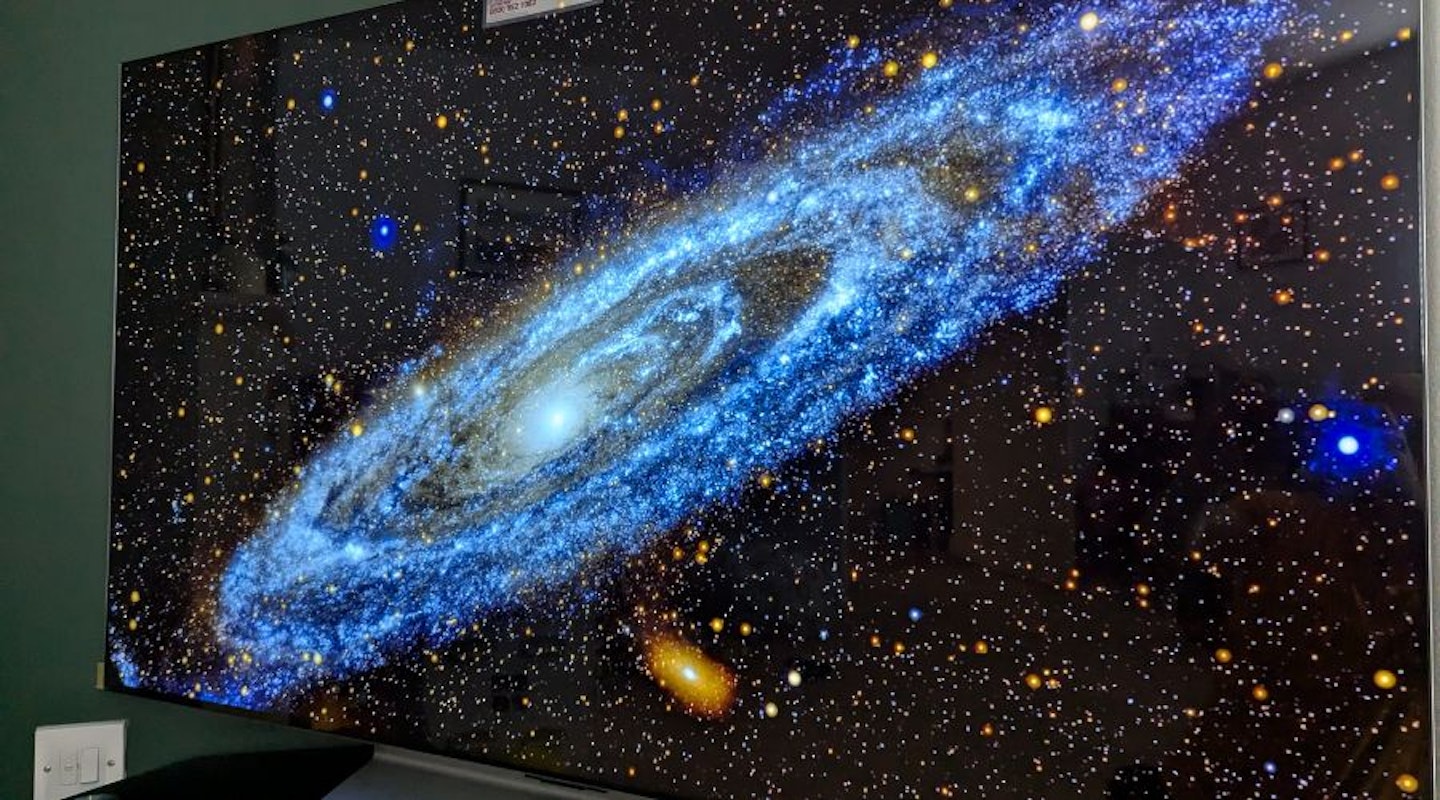
How to choose a smart TV
A selection of on-demand catch-up apps, such as BBC iPlayer, All 4, and ITV Hub, normally come pre-installed. However, the selection of apps pre-loaded or available to download may differ between manufacturers and models; so it’s worth double-checking that the model you’re considering can support the streaming and subscription services you need. If you're a fan of streaming music through your TV, check that your choice of model can support your chosen provider, such as Apple Music or Spotify.
Consider TV size and your available space
You may think that any old size will be fine for your lounge, but you'd be wrong. Samsung suggests a viewing angle of at least 40 degrees is the optimum way to properly enjoy your TV - although many now support much wider angles than that. As for the ideal viewing distance, what size TV should you get to make sure your viewing position doesn't feel strained or uncomfortable? Is a 32-inch really better than a 50-inch in a small room? It's actually incredibly simple.
Simply multiply the size of the set you plan on getting by 1.2. So if you're looking at a 55-inch TV, it'll be 66 inches or 1.67 m. Is your lounge big enough for that perfect viewing distance? If not, look at the next size down, if it's too big, consider the next size up.
For a more in-depth look at these issues and more, check out our special guide to choosing the right size TV.
Set your budget and spend wisely
It goes without saying that with a purchase this important, you'll need to make sure your money is going where you need it the most. In other words, if you're all about the quality of the image, you may need to forego some of the whizzy extra features, like gaming modes and high variable refresh rates. If you're a gamer and want all of the techie extras, you may find you'll need a smaller screen to get the biggest bang for your buck. But of course, one of the biggest aspects that will govern your spend is screen size. Get the right size screen for your room, and the rest should fall into place depending on how much you have to spend.
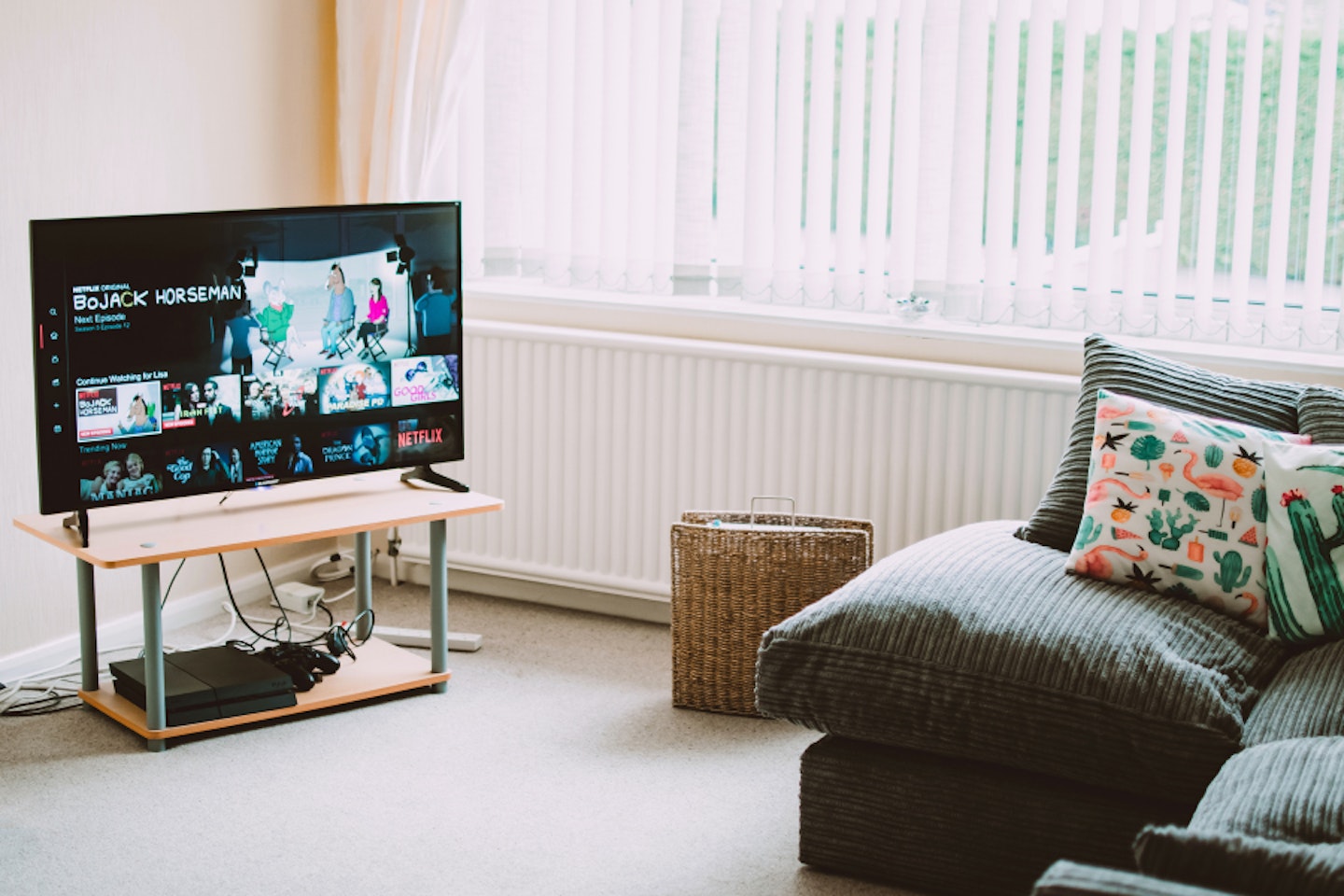
Jargon buster:
4K UHD – A TV's picture quality is measured by the number of pixels the screen has. A 4K (or Ultra High Definition) screen has roughly 4,000 pixels in total. This is about 4x the number of pixels in a standard full HD display. Some 8K TVs have started to appear on the market, but these are usually of the larger and very expensive type, such as some of the best 80-inch TVs.
HDMI – HDMI stands for High Definition Multimedia Interface. It's used to transfer high-definition audio and video from a device such as a DVD player, game console or PC to a screen.
Contrast – Contrast on a screen is the ratio between the lightest and darkest tones a screen can produce.
HDR – HDR, or High Dynamic Range, significantly boosts the contrast between light and dark tones, as well as colour, to create picture quality with extra depth and realism.
Refresh rate – Refresh rate is the measure of how many times per second a screen can create a new image. A screen with a high refresh rate creates a much smoother picture that is excellent for gaming.
OLED – OLED, or Organic Light Emitting Diodes, don't need a backlight to create light. Instead, they produce their own light, so they're incredibly quick and far more energy efficient.
QLED – An alternative to OLED and standard LED, Quantum-Dot Light Emitting Diodes (or QLED) use phosphorescent nanocrystals. They dramatically enhance the colour produced by an LED backlight. QLED displays have the best colour range, many of them producing over a billion shades.
<strong>FAQs</strong>
Which is the best TV brand?
Each and every brand has its own specialities. All-in-all, Samsung is considered the top dog in the TV game, and it isn't difficult to see why. Their excellent range of TVs, from their budget screens to their 85-inch 8K neo-QLED behemoths, are game-changing. But it's not just the technology inside of course.
If you buy from our top picks above, there's always going to be a premium TV experience in-store. However, they'll all have their pros and cons, from the feel of the remote control to the responsiveness of the operating system. With Samsung though, it seems to consistently deliver impeccable screen quality, which is tough to beat.
Do you need an aerial for a smart TV?
Strictly speaking, no. If your smart TV is connected to the internet you will be able to access streaming content. Some of the best TVs though will also incorporate a digital terrestrial (Freeview) aerial, or digital satellite (FreeSat) dish input for receiving live broadcasts. We recommend having one of these should your internet connection fail for any reason.
Does a smart TV need an internet connection?
The answer to this is much the same as the previous question but in reverse. If you're planning to watch FreeView (or a DVD, or Blu-ray disk) you'll have no problems watching without the web. But if you're planning on watching shows on Netflix, Amazon Prime, Now or YouTube - then it's a hard no. You'll need internet access to use any of these services.
If you're using a VPN to stream, you'll likely need a media streaming stick - like a Fire Stick or Roku Streaming Stick - to access its benefits more easily. Alternatively, you could install the VPN to your router.
Why should you trust us?
At What’s The Best, our mission is to provide accurate and reliable reviews, ensuring our readers receive honest and transparent information about the best technology products available. Anything less would undermine our commitment to being a trusted source of unbiased product information.
Our dedicated in-house writing team comprises experts with extensive experience and a genuine passion for technology. Collectively, we have spent decades testing and writing about tech, leveraging our expertise in all our articles, advice pieces and reviews.
We maintain complete editorial independence and do not accept payment for product reviews. Our writers have full control over their content, ensuring that products are selected based solely on the needs of our readers. While we may earn commissions or other compensation from links on our website, this never affects our product choices. These links enable us to continue offering valuable consumer advice, without compromising the integrity of our reviews.
Ryan Houghton is a commercial content writer for What's The Best, known best for his expertise in gaming, with a particular soft spot for PC gaming, audio tech, televisions and smartphones.
Diligently writing for What's The Best for almost two years, there are very few tech products Ryan hasn’t had his hands on to review; televisions, headphones, folding phones and even LEGO, if it’s nerdy, he’ll be there.
His well-versed history as one of the resident techies at What's The Best has kept him keen to uncover the very best deals, savings and offers for those in need of a cracking deal to upgrade their setup.
In his downtime, Ryan most likely has his nose buried in a fantasy book, or his eyes glued to a screen whilst playing a tough-as-nails Soulslike or leisurely RPG, indulging in most forms of escapism where possible.



